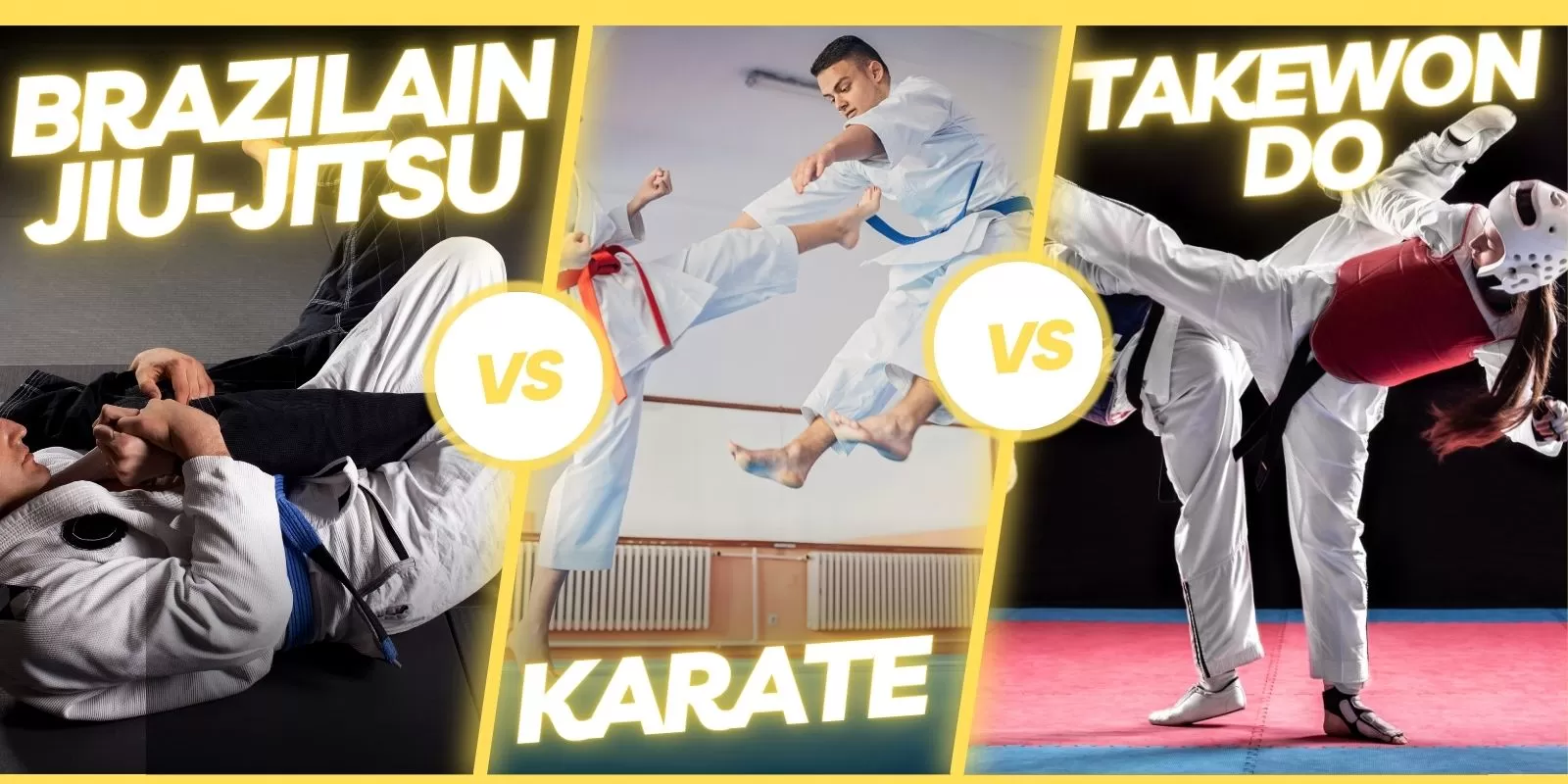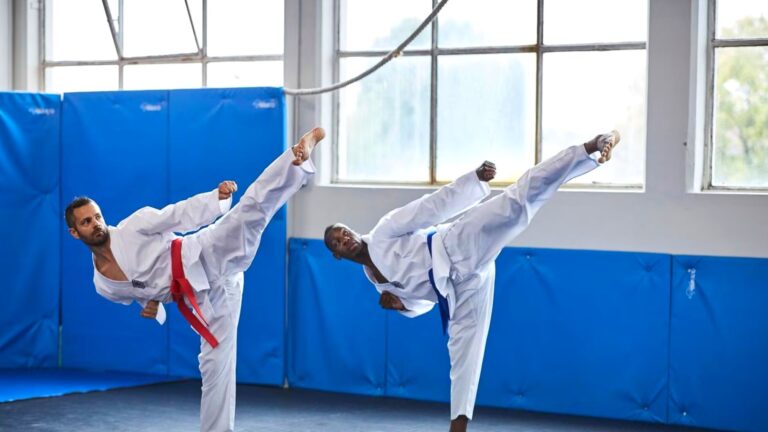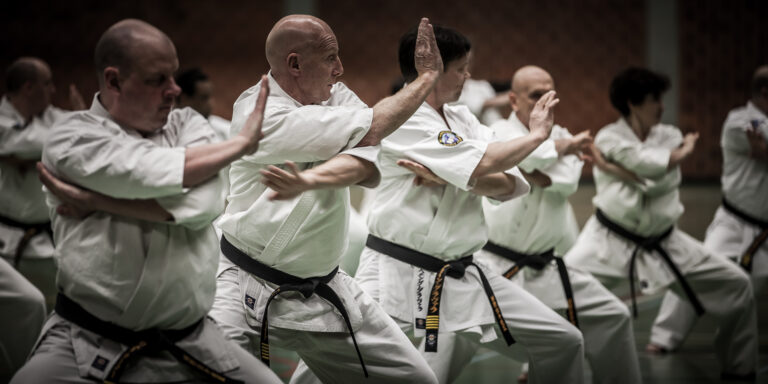Brazilian Jiu-Jitsu vs. Karate vs. Taekwondo: Understanding the Differences and Benefits
Martial arts have been practiced for centuries, each with its unique techniques, philosophies, and benefits. Among the most popular and widely practiced styles are Brazilian Jiu-Jitsu (BJJ), Karate, and Taekwondo. While they all promote physical fitness, discipline, and self-defense, they differ significantly in their approach and techniques. If you’re considering starting a martial art or simply curious about these styles, this guide will help you understand the key differences and benefits of Brazilian Jiu-Jitsu, Karate, and Taekwondo.
Brazilian Jiu-Jitsu (BJJ)
Overview:
Brazilian Jiu-Jitsu is a grappling-based martial art that focuses on ground fighting and submission holds. Originating from Judo and traditional Japanese Jiu-Jitsu, BJJ emphasizes using leverage and technique to control and submit opponents, making it effective even for smaller practitioners.
Techniques:
- Ground Fighting: BJJ practitioners spend most of their time training on the ground, learning how to control and submit opponents.
- Submissions: Techniques such as joint locks and chokeholds are used to force an opponent to submit.
- Sweeps and Transitions: BJJ also involves moving from one dominant position to another, maintaining control over the opponent.
Benefits:
- Effective Self-Defense: BJJ is highly effective for self-defense, especially in real-world scenarios where fights often end up on the ground.
- Physical Fitness: Training in BJJ improves strength, flexibility, and cardiovascular endurance.
- Problem-Solving Skills: BJJ is often referred to as “physical chess” because it requires strategic thinking and problem-solving.
Karate
Overview:
Karate is a striking martial art that originated in Okinawa, Japan. It focuses on powerful strikes, blocks, and stances. Karate practitioners, or karateka, train to deliver precise, powerful strikes using various parts of their bodies, including fists, elbows, knees, and feet.
Techniques:
- Strikes: Karate emphasizes punches, kicks, knee strikes, and elbow strikes.
- Katas: These are predefined sequences of movements that teach forms, techniques, and transitions.
- Blocks and Parries: Karate includes techniques for blocking and redirecting incoming attacks.
Benefits:
- Improved Coordination: Karate training enhances coordination, balance, and agility.
- Self-Discipline: The rigorous training and practice of katas instill discipline and focus.
- Self-Defense: Karate provides effective self-defense techniques, especially in stand-up confrontations.
Taekwondo
Overview:
Taekwondo is a Korean martial art known for its high, fast kicks and jumping and spinning techniques. It combines both self-defense and sport aspects, with practitioners, or taekwondoin, often competing in sparring and forms.
Techniques:
- Kicks: Taekwondo is famous for its dynamic kicking techniques, including roundhouse kicks, side kicks, and spinning kicks.
- Hand Techniques: While less emphasized, Taekwondo also includes punches, blocks, and strikes.
- Forms (Poomsae): Practitioners perform a series of movements in patterns, demonstrating techniques and precision.
Benefits:
- Flexibility and Agility: The high kicks and dynamic movements enhance flexibility and agility.
- Fitness and Strength: Taekwondo training improves overall physical fitness, strength, and endurance.
- Competitive Opportunities: With a strong emphasis on sport, Taekwondo offers numerous opportunities for competition at various levels.
Comparing the Styles
Focus:
- BJJ: Ground fighting, submissions, and grappling.
- Karate: Striking techniques, forms, and self-defense.
- Taekwondo: Kicking techniques, forms, and sport competition.
Training Environment:
- BJJ: Often involves live sparring (rolling) with partners to practice techniques in real-time.
- Karate: Focuses on katas, drills, and sparring to develop techniques and discipline.
- Taekwondo: Combines forms practice with sparring, often in a competitive context.
Practical Application:
- BJJ: Highly effective in self-defense scenarios where grappling and ground control are crucial.
- Karate: Effective for self-defense with powerful strikes and blocks, particularly in stand-up situations.
- Taekwondo: Offers effective self-defense techniques, particularly with its powerful kicks, and opportunities for sport competition.
Which One is Right for You?
Choosing between Brazilian Jiu-Jitsu, Karate, and Taekwondo depends on your personal goals and preferences:
- For Self-Defense: BJJ offers excellent ground-fighting techniques, while Karate and Taekwondo provide effective stand-up defense.
- For Fitness: All three styles improve physical fitness, but BJJ focuses more on strength and endurance, Karate on coordination and discipline, and Taekwondo on flexibility and agility.
- For Competition: If you’re interested in sport competition, Taekwondo provides numerous opportunities, while Karate and BJJ also have competitive elements.
Conclusion
Brazilian Jiu-Jitsu, Karate, and Taekwondo each offer unique benefits and approaches to martial arts training. Whether you’re looking to improve your self-defense skills, enhance your physical fitness, or find a new competitive outlet, understanding the differences between these styles can help you make an informed decision. Whichever martial art you choose, you’ll be embarking on a journey of personal growth, discipline, and physical improvement.



